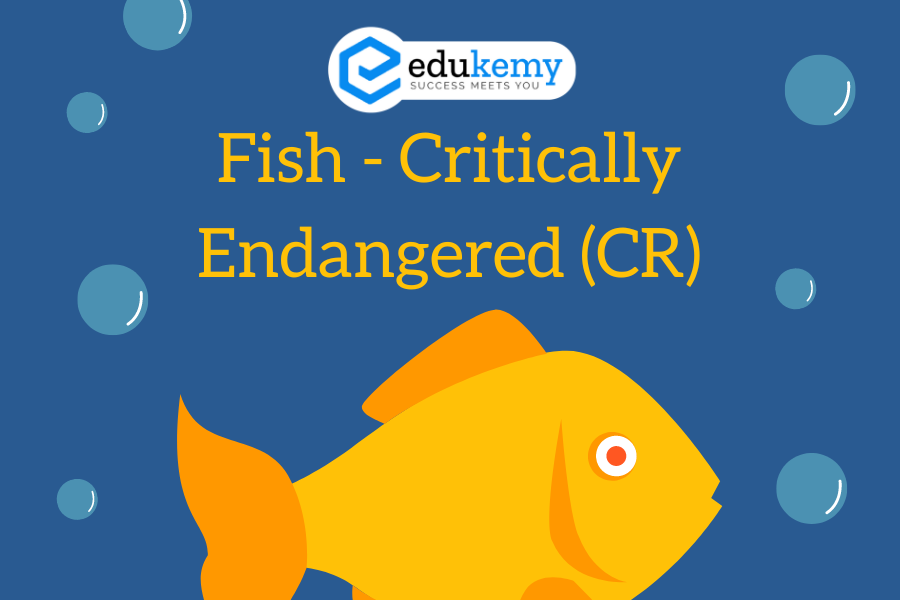The International Union for Conservation of Nature (IUCN) Red List serves as a vital tool in assessing the conservation status of species worldwide, offering a comprehensive platform to monitor and evaluate the risk of extinction faced by various organisms. Within this expansive database, fishes represent a diverse and ecologically significant group, inhabiting a multitude of aquatic ecosystems, from freshwater rivers to the depths of the ocean. The Red List categorizes fish species based on their population trends, distribution, and threats, providing crucial insights into the health of aquatic environments and guiding conservation efforts to safeguard these invaluable components of global biodiversity. Through meticulous assessment and classification, the IUCN Red List underscores the urgent need for concerted action to mitigate the myriad pressures facing fish populations and ensure their long-term survival in our rapidly changing world.
Contents
- 1 FAQs about Critically Endangered and Endangered Fish
- 1.1 1. What are some examples of Critically Endangered fish species?
- 1.2 2. What threats do Critically Endangered fish species face?
- 1.3 3. What does it mean when a fish species is classified as Endangered?
- 1.4 4. Can you provide examples of Endangered fish species and their threats?
- 1.5 5. What conservation measures are needed to protect Critically Endangered and Endangered fish species?
- 2 In case you still have your doubts, contact us on 9811333901.
CRITICALLY ENDANGERED FISH
1-Pondicherry Shark (Carcharhinus hemiodon):
- Distribution: Found in the Indian Ocean, ranging from the Gulf of Oman to Pakistan, India, and Sri Lanka. Recorded in scattered localities spanning from India to New Guinea, including the mouth of the Hooghly River.
- Threats: Faces challenges from large, expanding, and unregulated commercial fisheries in inshore localities and habitats.
2-Ganges Shark (Glyphis gangeticus):
- Occurs in the turbid waters of the Ganga River and the Bay of Bengal.
- Distribution: Found in India and possibly in Pakistan, known to inhabit the Ganga River system and the Hooghly River mouth.
- Threats: Major fisheries targeting sharks pose significant threats, along with potential risks from overfishing, pollution, increasing river use, and construction of dams and barrages.
3-Large-tooth Sawfish (Pristis microdon):
- Distribution: Found in the western part of the Indo-Pacific, ranging from East Africa to New Guinea, and from the Philippines and Vietnam to Australia. Known to enter the Mahanadi River up to 64 km inland and common in the estuaries of the Ganga and Brahmaputra rivers in India.
- Threats: Principal threats include fisheries, as their long tooth-studded saw makes them highly vulnerable to entanglement. They are often traded due to the high value of their products, with habitat changes from dam construction, siltation, and pollution also posing significant risks.
4-Long-comb Sawfish or Narrow-snout Sawfish (Pristis zijsron):
- Frequently found in shallow water, inhabiting muddy bottoms and entering estuaries.
- Distribution: Found in the Indo-Pacific region, including Australia, Cambodia, China, India, Indonesia, and Malaysia.
- Threats: Severely depleted due to intensive targeting and incidental bycatch in commercial, sport, or shark-control net fisheries, as well as for aquarium display. Extirpated from many parts of its range due to overexploitation.
ENDANGERED FISH
1-Knife-tooth Sawfish (Anoxypristis cuspidata):
- Distribution: Found widely in the western part of the Indo-Pacific region, including the Red Sea.
- Threats: Faces similar threats to the Long-comb Sawfish, including overfishing and incidental bycatch in various fisheries.
FAQs about Critically Endangered and Endangered Fish
1. What are some examples of Critically Endangered fish species?
A: Critically Endangered fish species include the Pondicherry Shark, Ganges Shark, Large-tooth Sawfish, and Long-comb Sawfish. These species are at extremely high risk of extinction due to factors such as overfishing, habitat degradation, and pollution.
2. What threats do Critically Endangered fish species face?
A: Critically Endangered fish species face threats from large, expanding, and unregulated commercial fisheries, overfishing, pollution, habitat degradation, and changes in river use. For example, the Pondicherry Shark is threatened by unregulated fishing practices in inshore habitats, while the Large-tooth Sawfish is vulnerable to entanglement in fishing gear.
3. What does it mean when a fish species is classified as Endangered?
A: When a fish species is classified as Endangered, it means that it is at a very high risk of extinction in the wild. Endangered fish species face significant threats to their survival and require immediate conservation action to prevent further population declines and extinction.
4. Can you provide examples of Endangered fish species and their threats?
A: Examples of Endangered fish species include the Knife-tooth Sawfish. These species face threats such as overfishing, habitat degradation, and incidental bycatch in various fisheries. For instance, the Knife-tooth Sawfish is vulnerable to overexploitation and incidental bycatch in commercial fisheries, similar to other sawfish species.
5. What conservation measures are needed to protect Critically Endangered and Endangered fish species?
A: Conservation measures needed to protect Critically Endangered and Endangered fish species include implementing regulations to limit fishing pressure, establishing protected areas to conserve critical habitats, reducing pollution, and promoting sustainable fishing practices. Additionally, community engagement and education programs can help raise awareness about the importance of conserving these species and their habitats.
In case you still have your doubts, contact us on 9811333901.
For UPSC Prelims Resources, Click here
For Daily Updates and Study Material:
Join our Telegram Channel – Edukemy for IAS
- 1. Learn through Videos – here
- 2. Be Exam Ready by Practicing Daily MCQs – here
- 3. Daily Newsletter – Get all your Current Affairs Covered – here
- 4. Mains Answer Writing Practice – here

